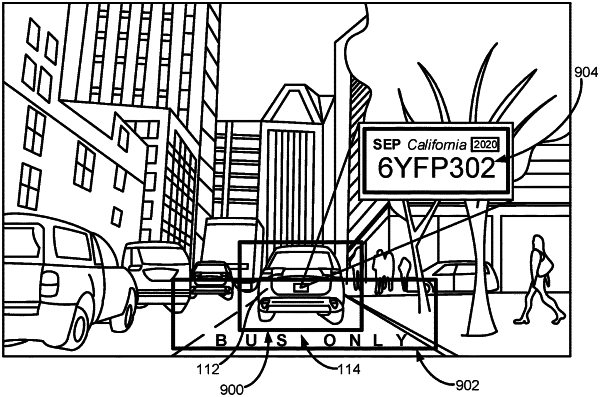| CPC H04N 7/188 (2013.01) [G01C 22/02 (2013.01); G01S 19/33 (2013.01); G06F 18/214 (2023.01); G06F 18/2163 (2023.01); G06F 18/22 (2023.01); G06V 10/764 (2022.01); G06V 20/56 (2022.01); H04N 7/181 (2013.01); H04N 23/54 (2023.01); H04N 23/90 (2023.01); B60R 16/023 (2013.01); G06V 20/625 (2022.01); G06V 2201/08 (2022.01); H04L 67/10 (2013.01)] | 20 Claims |

|
1. A method for detecting a traffic violation, comprising:
capturing a first video of a vehicle and a restricted road area using one or more video image sensors of a first edge device;
identifying, using one or more processors of the first edge device, the vehicle and the restricted road area from frames of the first video by applying functions from a computer vision library to the first video and passing at least some of the frames of the first video to one or more deep learning models running on the first edge device;
bounding, using the one or more processors of the first edge device, the vehicle and the restricted road area from the frames of the first video in a plurality of first bounding boxes;
detecting, at the first edge device, a first potential traffic violation based in part on overlap of the plurality of first bounding boxes and transmitting data obtained from the first video to a server;
capturing a second video of the vehicle and the restricted road area using one or more video image sensors of a second edge device;
identifying, using one or more processors of the second edge device, the vehicle and the restricted road area from frames of the second video by applying functions from a computer vision library to the second video and passing at least some of the frames of the second video to one or more deep learning models running on the second edge device;
bounding, using the one or more processors of the second edge device, the vehicle and the restricted road area from the frames of the second video in a plurality of second bounding boxes;
detecting, at the second edge device, a second potential traffic violation based in part on overlap of the plurality of second bounding boxes and transmitting data obtained from the second video to the server; and
determining, at the server, that a traffic violation has occurred based on the data received from the first edge device and the second edge device.
|